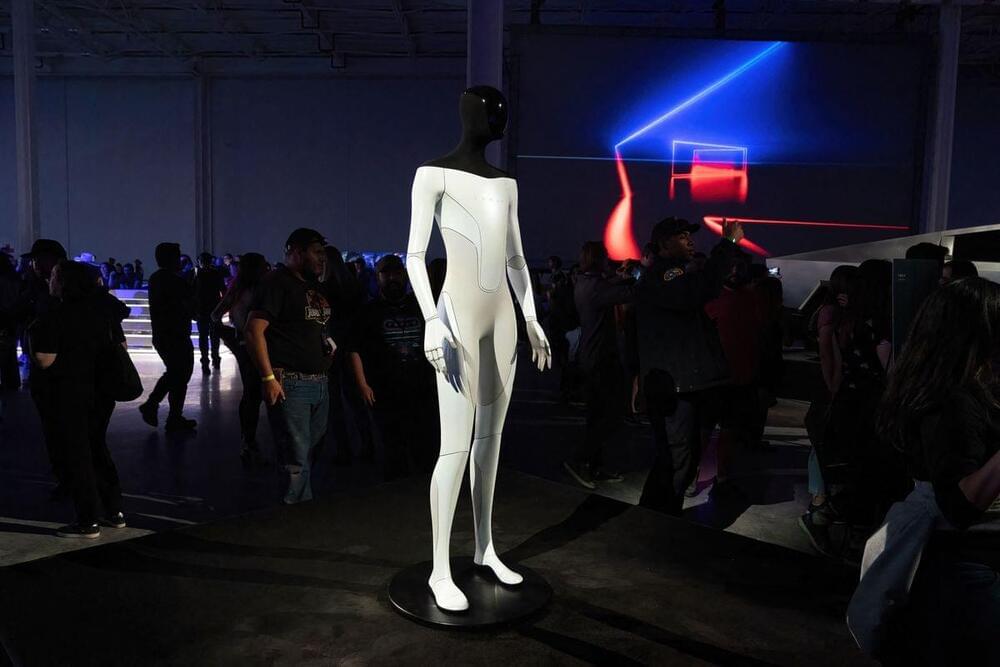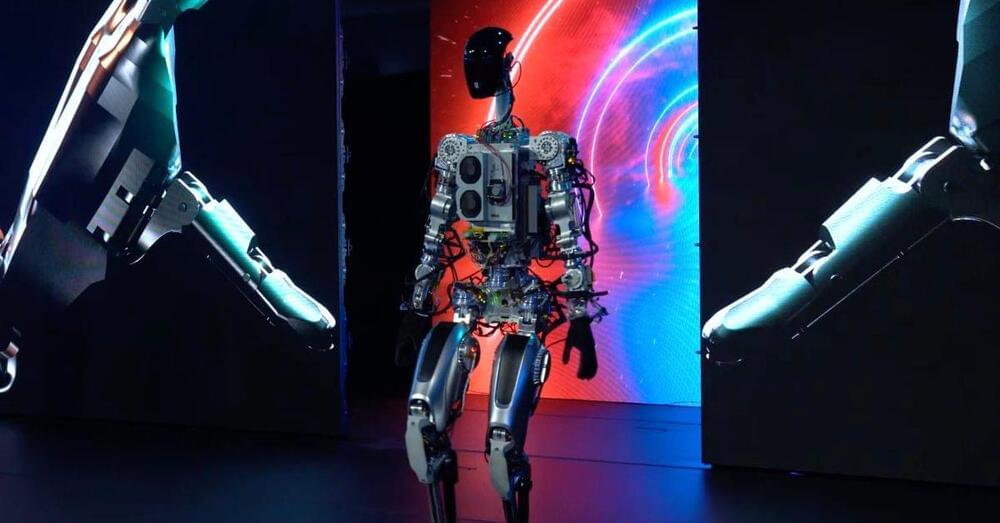Tesla AI Day 2022 was one of the best technology presentation since long time! In this video I discuss Tesla DOJO updates from Tesla AI Day 2022.
#Tesla #AIDay2022
Support me on Patreon: https://www.patreon.com/AnastasiInTech.
Tesla AI Day 2022 was one of the best technology presentation since long time! In this video I discuss Tesla DOJO updates from Tesla AI Day 2022.
#Tesla #AIDay2022
Support me on Patreon: https://www.patreon.com/AnastasiInTech.
There was in-depth engineering rundowns as Musk asks AI experts to join Tesla and help build a better society.
Tesla AI Day 2022 explored the processes required to mimic the human, driver and worker. The autonomous robot and car were laid out in detail, from an engineering point of view. Elon Musk, the CEO of Tesla, opened the event, and laid out this event’s main focus, including the public in the Tesla projects, especially Optimus Tesla Bot.
The Optimus project begun in April 2022, with a concept of a fully autonomous humanoid robot, that is mass-produced and inexpensive enough that it is accessible to the average person.
Musk introduced the project lead engineer and her assistants.
Tesla.

Tesla unveiled its first prototype of its Optimus humanoid robot on Friday — an actual robot this time, by the strictest definition, instead of a flesh and blood human clad in a weird suit. The robot performed some basic functions, including walking a little bit and then raising its hands — all for the first time without supports or a crane, according to Tesla CEO Elon Musk.
The company may be taking its first early steps into humanoid robotics, but it has a lot riding on the business. Musk has said that the Optimus bot will eventually be more valuable “than the car business, worth more than FSD (Tesla’s add-on ‘Full Self-Driving” feature, which is not self driving.)
What was apparent at the event Friday night is that Tesla is making the economically wise, but strategically questionable decision to yoke together the destinies of both Optimus and its Autopilot (and by extension, FSD) ambitions.
An interdisciplinary team of University of Minnesota Twin Cities scientists and engineers has developed a first-of-its-kind, plant-inspired extrusion process that enables synthetic material growth. The new approach will allow researchers to build better soft robots that can navigate hard-to-reach places, complicated terrain, and potentially areas within the human body.
The paper is published in the Proceedings of the National Academy of Sciences (PNAS), a peer-reviewed, multidisciplinary, high-impact scientific journal.
“This is the first time these concepts have been fundamentally demonstrated,” said Chris Ellison, a lead author of the paper and professor in the University of Minnesota Twin Cities Department of Chemical Engineering and Materials Science. “Developing new ways of manufacturing are paramount for the competitiveness of our country and for bringing new products to people. On the robotic side, robots are being used more and more in dangerous, remote environments, and these are the kinds of areas where this work could have an impact.”
Blainjett Aviation announced that initial testing of its hemi-rotor aerodynamic concept has confirmed its potential to deliver faster, more efficient performance in VTOL aircraft. Subscale tests demonstrated the novel configuration’s net positive lift and low drag through the ascent/hover, cruise, and descent/hover phases of flight.
The startup is applying the hemi-rotor concept to a subscale drone as part of a path to demonstrating that the configuration can scale to larger unmanned or manned aircraft in eVTOL applications from package delivery and cargo to transport and tactical military roles. Blainjett’s hemi-rotor design situates familiar vertical lift rotors partially inside opposite sides of an enclosed fuselage. The airfoil-shaped fuselage also houses a pair of electric motors to drive the lift-rotors. Situated in the empennage above an inverted V-tail, the third motor powers a pusher prop.
In a hover, conventional open-rotors generate an even amount of lift all the way around. But when a traditional rotorcraft flies forward, its rotor blades both advances forward into the relative wind and retreat from it during rotation. This yields a dissymmetry of lift on opposing sides of the rotor arc, eventually creating a hard speed limit.
Circa 2015 face_with_colon_three
Researchers have built the world’s first artificial neuron that’s capable of mimicking the function of an organic brain cell — including the ability to translate chemical signals into electrical impulses, and communicate with other human cells.
These artificial neurons are the size of a fingertip and contain no ‘living’ parts, but the team is working on shrinking them down so they can be implanted into humans. This could allow us to effectively replace damaged nerve cells and develop new treatments for neurological disorders, such as spinal cord injuries and Parkinson’s disease.
“Our artificial neuron is made of conductive polymers and it functions like a human neuron,” lead researcher Agneta Richter-Dahlfors from the Karolinska Institutet in Sweden said in a press release.

This post is also available in:  עברית (Hebrew)
עברית (Hebrew)
As everyday technologies get more and more advanced, cyber security must be at the forefront of every customer. Cyber security services have become common and are often used by private companies and the public sector in order to protect themselves from potential cyber attacks.
One of these services goes under the name Darktrace and has recently been acquired by Cybersprint, a Dutch provider of advanced cyber security services and a manufacturer of special tools that use machine learning algorithms to detect cyber vulnerabilities. Based on attack path modeling and graph theory, Darktrace’s platform represents organizational networks as directional, weighted graphs with nodes where multi-line segments meet and edges where they join. In order to estimate the probability that an attacker will be able to successfully move from node A to node B, a weighted graph can be used. Understanding the insights gained will make it easier for Darktrace to simulate future attacks.
At 2022 Tesla AI Day, Elon Musk gave the public its first look at his company’s humanoid robot nicknamed Optimus. He expects the production model to cost less than $20,000.


Tesla has unveiled its Optimus humanoid robot at its AI Day 2022 today and Elon Musk believes Tesla can bring it to market for “less than $20,000”.
As expected, the event started with Tesla unveiling a working prototype of its humanoid robot – a project first announced at Tesla’s AI day in 2021.
There were two prototypes unveiled at the event.